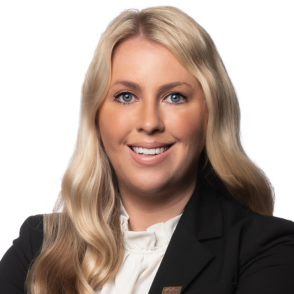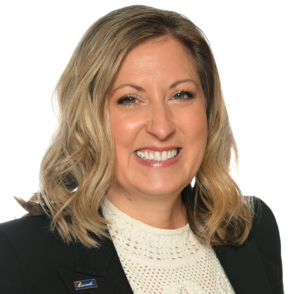The last few years have been challenging for the Property & Casualty (P&C) industry and the first half of 2023 was no different. After the first three months, the Insurance Information Institute had already predicted that 2023 would be unprofitable for carriers in P&C. Overall performance through the first six months has been as bad as the industry has seen in decades in terms of profitability. These factors have prompted the Insurance Information Institute to predict that P&C will not be profitable as a sector until 2025—and even that might be difficult to achieve.
Chances are the second half of 2023 will not be any better as the first. The devastating fire in Maui, Hawaii claimed more than 100 lives, causing an estimated $8-10 billion dollars of losses, including $1-3 billion in insured losses. The start of the Atlantic Hurricane season, predicted by the National Oceanic and Atmospheric Administration to be above average in 2023, has already witnessed Hurricane Idalia making landfall and wildfires raging in parts of Canada and the United States.
In this environment, it can be difficult for brokers and agents to meet their goals. The key is finding a way to communicate effectively with clients while navigating such industry hot buttons as falling capacity, increasing rates, and fewer carrier concessions. Serving clients may be difficult, but brokers experiencing such challenges are not alone.
That being said, many high-performing professionals are finding ways to capture coverage for their clients. Success can be found by adapting to today’s market conditions and understanding that methods and practices used in past market cycles are no longer appropriate.
Below are some recommended strategies to take with clients during this difficult market:
Ask questions of your clients and explain the reasoning behind the questions
Some brokers are reporting that clients are frustrated by the number of questions that are being asked when a new policy is sought or an existing one renewed. The fact is that clients should be worried if their broker is not asking numerous questions. With competition tight for capacity, only the strongest submissions, providing the most comprehensive details, are likely to be considered. The more information provided the more likely the client is to get the best possible terms.
Regular communications before renewals
The time to check in with a client is not a few weeks before a renewal. It is several months in advance. Connecting with clients long before their policy expires can provide them with peace of mind. More importantly, it gives brokers the opportunity to reference industry trends, while starting to set expectations for the next submission period. This is the time to be open and honest about capacity challenges and potential pricing increases. Automatic renewals with modest rate increases are becoming rare.
For example, if a client’s house has an aging roof, it may be time to encourage them to upgrade. Not only could the roof provide more protection in case of a catastrophic event, but it may reduce associated risk, giving them the chance for a lower rate that can help offset the roof’s cost. It may also prevent a client from receiving a non-renewal.
Find ways to educate clients and colleagues
Part of regular client communication should be spent educating on the realities of the marketplace. To effectively accomplish this, brokers need to stay abreast of current industry news, market trends, and best practices that will impact their business.
Historically, carriers have done a nice job of providing this information, but there are gaps developing in the industry that are increasingly filled by such organizations as the non-profit Private Risk Management Association (PRMA).
Taking advantage of association tools—member forums, professional designations, and other training programs, plus networking opportunities—can allow brokers and their clients to be better positioned to thrive in this challenging market cycle.
Partnering with a wholesaler
A constant trend among the most successful brokers is selecting the right wholesaler and partnering with them to strategize on accounts—putting together the strongest and best possible submission to present to the marketplace.
In this hard market, submissions must include more detail than is provided on a typical application. Brokers need to know the client, the client’s family, and their lifestyle. They need to know the risk characteristics of the client’s property, all updates to the home, and a complete, detailed history of losses. This strategy will lead to success more often and will result in clients receiving the best result the market has to offer.
Burns & Wilcox seeks to partner with retailers who represent well-managed risks, have strong relationships with their clients, and are willing to get creative to find solutions.
Be consultative and focus on value
A transactional approach will likely lead to a higher percentage of declinations.
Successful brokers are actively engaging in consultative discussions with their clients around pricing and terms to minimize surprises at renewal time.
Utilizing market knowledge and industry research, brokers can help clients avoid unnecessary claims and focus on the value they bring to their clients as risk managers— reminding them that insurance is there to make them whole should a large loss occur.
Promote the benefits of the E&S market
There are some brokers that struggle to sell the benefits of the Excess and Surplus (E&S) marketplace and question the stability and quality of the products, carriers, and services. Yet in the last 20 years, just one of 274 financial impairments in the U.S P&C Market have come from a surplus lines carrier according to the September 2022 AM Best Market Segment Report. The other 273 came from the admitted marketplace. We expect the 2023 report will include additional admitted markets with financial impairments.
One of the many benefits of the surplus market is its freedom of rate and form. This freedom allows for creative solutions for individual risks as well as an ability to better manage financial stability. In hard market cycles, the E&S market is a stable market as shown by the fact that surplus lines are expected to reach nearly $100 billion in premium volume by the end of 2023—the fifth year in a row with double-digit premium growth.
Submission or renewal decisions are often made more quickly in the E&S market and competitive coverage and rates are available.
Find unique solutions
As experts in the E&S market, Burns & Wilcox partners with brokers and agents to find unique solutions to common client problems.
For example, a client with property in northern California may not look favorably on receiving an option like the California Fair Plan, which provides California property owners access to basic fire insurance when policies in the traditional market are difficult or impossible to get. However, a knowledgeable broker may recommend it as the best option for wildfire coverage when coupled with a supplemental difference in conditions policy.
Other unique options include wind and earthquake deductible buyback coverage to better manage out-of-pocket costs in a market where deductibles continue to increase. Often these solutions assist in satisfying a client’s mortgage deductible requirement.
By understanding a client’s risk tolerance to certain perils, brokers can use excess wind coverage, wind-only coverage, and other coverage exclusions and strategies to provide valuable protection in stressed markets such as Florida and other coastal areas.
Unfortunately, there are many factors beyond our control in today’s P&C market. What is within the control of brokers and agents is how they adapt and implement the above strategies with their clients.
Contributors: Bill Gatewood, Corporate Senior Vice President, National Personal Insurance Practice Leader, Burns & Wilcox; Heather Posner, Associate Vice President, National Product Leader, Private Client, Burns & Wilcox; Sarah Chandonnet, Director, Private Client, Burns & Wilcox
This commentary is intended to provide a general overview of the issues contained herein and is not intended, nor should it be construed, to provide legal or regulatory advice or guidance. If you have questions or issues of a specific nature, you should consult with your own risk, legal, and compliance teams.








